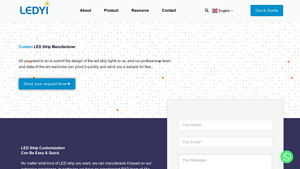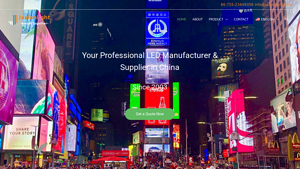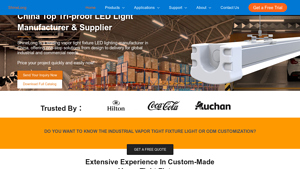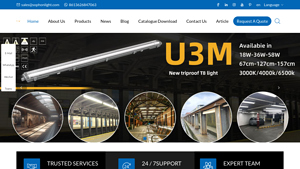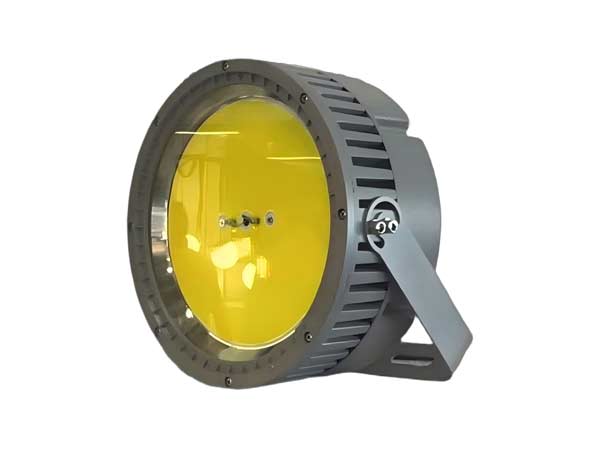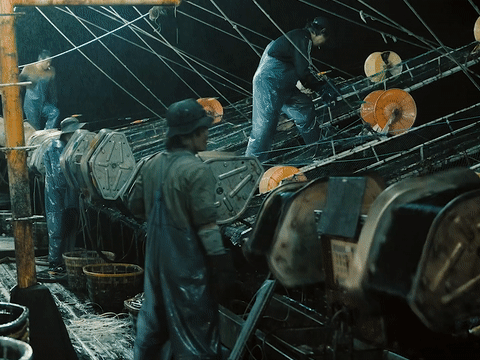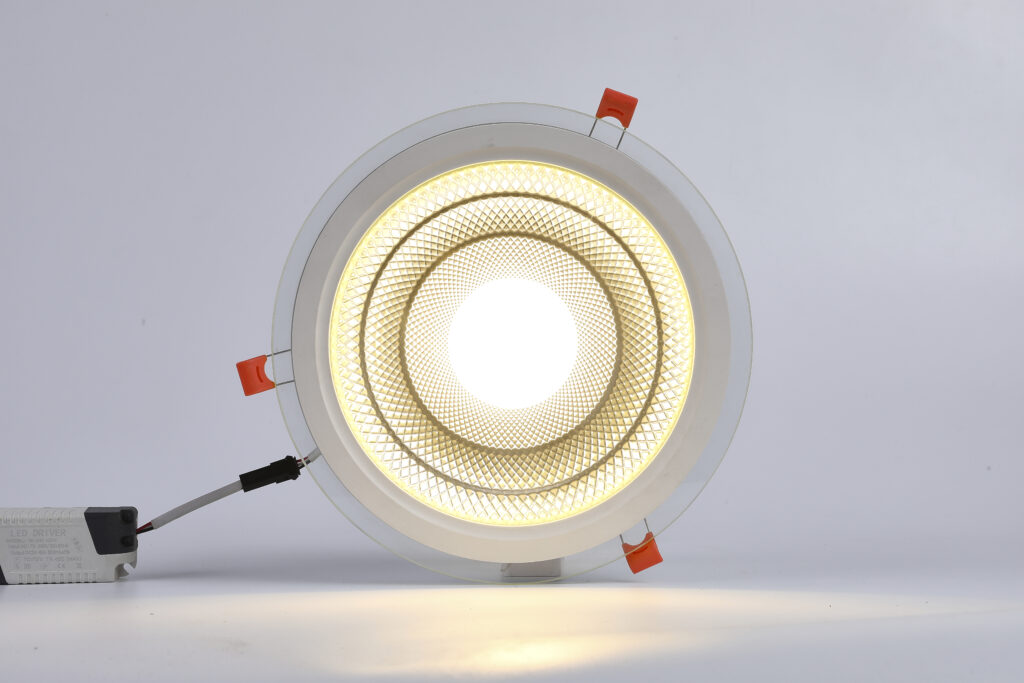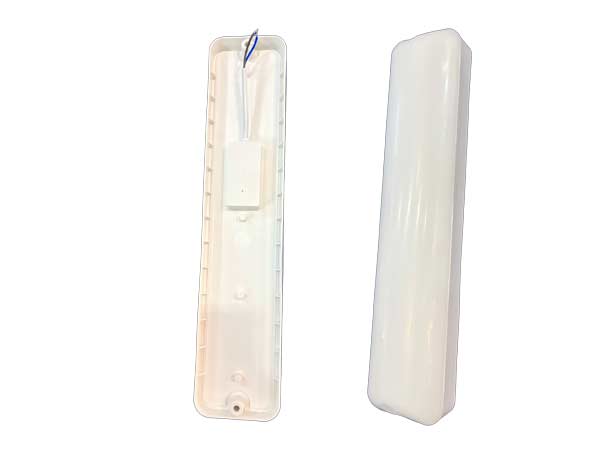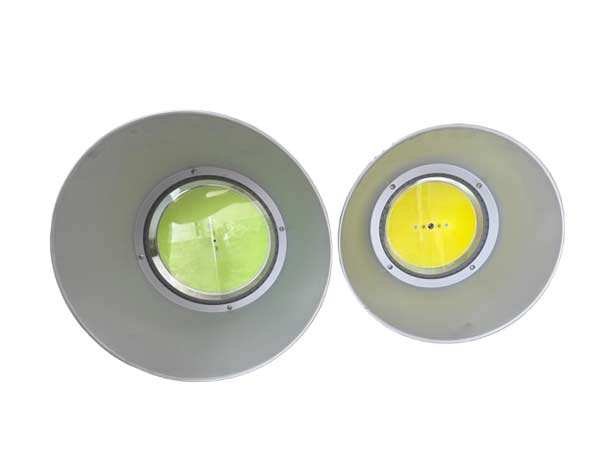Article Navigation
- Introduction: Navigating the Global Market for top Long shape Tri-proof LED cieling light suppliers in china
- Understanding top Long shape Tri-proof LED cieling light suppliers in china Types and Variations
- Key Industrial Applications of top Long shape Tri-proof LED cieling light suppliers in china
- Strategic Material Selection Guide for top Long shape Tri-proof LED cieling light suppliers in china
- In-depth Look: Manufacturing Processes and Quality Assurance for top Long shape Tri-proof LED cieling light suppliers in china
- Comprehensive Cost and Pricing Analysis for top Long shape Tri-proof LED cieling light suppliers in china Sourcing
- Spotlight on Potential top Long shape Tri-proof LED cieling light suppliers in china Manufacturers and Suppliers
- Essential Technical Properties and Trade Terminology for top Long shape Tri-proof LED cieling light suppliers in china
- Navigating Market Dynamics, Sourcing Trends, and Sustainability in the top Long shape Tri-proof LED cieling light suppliers in china Sector
- Frequently Asked Questions (FAQs) for B2B Buyers of top Long shape Tri-proof LED cieling light suppliers in china
- Important Disclaimer & Terms of Use
- Strategic Sourcing Conclusion and Outlook for top Long shape Tri-proof LED cieling light suppliers in china
Introduction: Navigating the Global Market for top Long shape Tri-proof LED cieling light suppliers in china
In an increasingly interconnected global economy, sourcing high-quality lighting solutions has become essential for businesses aiming to enhance their operational efficiency and aesthetic appeal. Among the various lighting options available, Long shape Tri-proof LED ceiling lights stand out due to their durability, energy efficiency, and versatility, making them ideal for a range of applications from commercial spaces to industrial environments.
This comprehensive guide is designed to assist international B2B buyers, particularly those from Africa, South America, the Middle East, and Europe, in navigating the complex landscape of suppliers in China. As the manufacturing powerhouse of the world, China offers a plethora of options; however, the challenge lies in identifying suppliers that not only meet quality standards but also align with your specific business needs and values.
Throughout this guide, you will find detailed insights into the top suppliers of Long shape Tri-proof LED ceiling lights, including their product offerings, pricing structures, and certifications. Additionally, we will explore key factors to consider when selecting a supplier, such as production capabilities, customer service, and delivery timelines. By equipping you with this knowledge, we aim to empower you to make informed sourcing decisions that can lead to significant cost savings and enhanced product quality for your business.
Understanding top Long shape Tri-proof LED cieling light suppliers in china Types and Variations
| Type Name | Key Features | Primary B2B Applications | Pros | Cons |
|---|---|---|---|---|
| Standard Long Tri-proof LED | Waterproof, dustproof, high lumen output | Warehouses, factories, parking lots | Energy-efficient, durable, easy installation | Limited design options |
| Smart Long Tri-proof LED | IoT-enabled, adjustable brightness and color | Retail stores, exhibition halls, offices | Customizable lighting, remote control | Higher initial cost |
| High Bay Long Tri-proof LED | High lumen output, robust design for high ceilings | Manufacturing plants, gymnasiums | Excellent for large spaces, energy-efficient | Installation may require professional help |
| Emergency Long Tri-proof LED | Battery backup, automatic sensor for outages | Hospitals, emergency exits, public transport | Ensures safety during power outages | Shorter lifespan of battery |
| Solar Long Tri-proof LED | Solar-powered, eco-friendly | Outdoor areas, remote sites, construction sites | Reduces electricity costs, sustainable option | Dependent on sunlight, limited output at night |
Standard Long Tri-proof LED
Standard Long Tri-proof LED lights are designed to withstand harsh environments. With features like waterproof and dustproof ratings, they are ideal for use in warehouses and factories. Their high lumen output ensures bright illumination over large areas, making them a popular choice among B2B buyers. The advantages include energy efficiency and durability; however, they may lack aesthetic appeal and design options compared to other types.
Smart Long Tri-proof LED
Smart Long Tri-proof LED lights incorporate IoT technology, allowing for adjustable brightness and color settings. This makes them suitable for dynamic environments like retail stores and exhibition halls. The ability to customize lighting through remote control enhances user experience. While they offer innovative features, the initial investment can be higher than traditional models, which may deter some buyers.
High Bay Long Tri-proof LED
High Bay Long Tri-proof LEDs are engineered for high ceilings, often found in manufacturing plants and gymnasiums. They provide an exceptional lumen output, making them effective for illuminating expansive spaces. Their energy-efficient design is a significant advantage, but installation might require professional assistance, which could lead to additional costs for B2B buyers.
Emergency Long Tri-proof LED
Emergency Long Tri-proof LEDs come equipped with battery backup systems that activate during power outages. These lights are crucial in settings like hospitals and emergency exits, ensuring safety and compliance with regulations. Their ability to automatically turn on during outages is a significant advantage, though the battery lifespan can be a concern, requiring periodic replacements.
Solar Long Tri-proof LED
Solar Long Tri-proof LEDs represent an eco-friendly lighting solution that harnesses solar energy. They are perfect for outdoor applications, especially in remote locations where traditional electrical supply is limited. The sustainability factor and potential for reduced electricity costs appeal to environmentally-conscious buyers. However, their performance can be hindered by insufficient sunlight, particularly in less sunny regions, limiting their effectiveness at night.
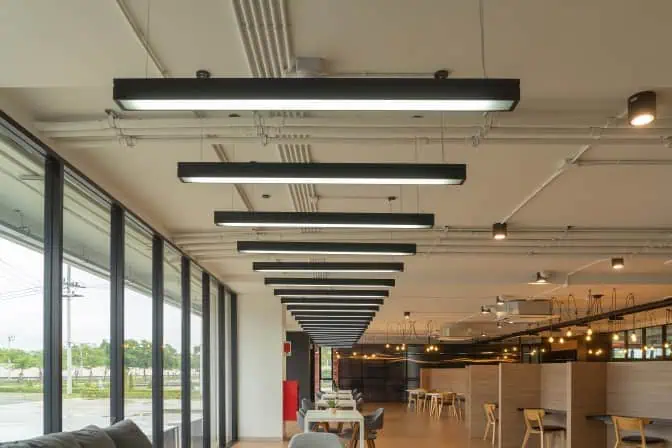
Illustrative Image (Source: Google Search)
Key Industrial Applications of top Long shape Tri-proof LED cieling light suppliers in china
In the global market, Long shape Tri-proof LED ceiling lights have become essential fixtures across various industries due to their durability, energy efficiency, and versatility. Below are key industries and specific applications where these lights are making significant impacts.
| Industry | Specific Application | Business Value | Sourcing Considerations |
|---|---|---|---|
| Manufacturing | Factory Lighting | Enhances productivity by providing consistent lighting for workspaces. | Look for suppliers with high lumen output and durability standards. |
| Logistics & Warehousing | Warehouse and Storage Facility Lighting | Improves visibility and safety, reducing accidents and operational delays. | Ensure compliance with safety regulations and energy efficiency certifications. |
| Retail | Store Interior and Display Lighting | Attracts customers and enhances product visibility, leading to increased sales. | Select suppliers that offer customizable options for color temperature and brightness. |
| Hospitality | Hotel and Restaurant Lighting | Creates an inviting atmosphere, enhancing guest experience and satisfaction. | Consider suppliers with a range of design aesthetics to suit different themes. |
| Healthcare | Hospital and Clinic Lighting | Supports patient comfort and aids in medical procedures through optimal visibility. | Prioritize suppliers with products that meet healthcare standards for hygiene and light quality. |
Detailed Applications
-
Manufacturing: Factory Lighting
Long shape Tri-proof LED ceiling lights are ideal for manufacturing environments where consistent lighting is crucial for productivity. These lights ensure that workers can perform tasks with minimal eye strain, leading to better output quality. Additionally, their robust design can withstand harsh conditions, including dust, moisture, and temperature fluctuations, typical in manufacturing settings. B2B buyers should prioritize suppliers that offer high lumen outputs and energy-efficient solutions to lower operational costs. -
Logistics & Warehousing: Warehouse and Storage Facility Lighting
In logistics and warehousing, proper lighting is essential for safety and efficiency. Long shape Tri-proof LED ceiling lights provide bright, uniform illumination that enhances visibility in large spaces, thus reducing the risk of accidents and improving the speed of operations. By sourcing from reliable suppliers, businesses can ensure compliance with safety standards while also benefiting from lower energy consumption, which is crucial for maintaining operational budgets. -
Retail: Store Interior and Display Lighting
In retail, the ambiance created by lighting can significantly influence consumer behavior. Long shape Tri-proof LED ceiling lights can enhance product displays and create an inviting atmosphere that encourages customers to spend more time in the store. B2B buyers should seek suppliers that offer customizable lighting options to match their brand’s aesthetics, ensuring that their products are presented in the best possible light. -
Hospitality: Hotel and Restaurant Lighting
The hospitality industry relies heavily on lighting to create mood and enhance guest experiences. Long shape Tri-proof LED ceiling lights can be used in various settings, from dining areas to lobbies, providing both functionality and style. When sourcing these lights, businesses should consider suppliers that provide a range of design options, allowing for cohesive interior designs that attract and retain guests. -
Healthcare: Hospital and Clinic Lighting
In healthcare settings, lighting plays a critical role in patient care and operational efficiency. Long shape Tri-proof LED ceiling lights offer bright, flicker-free illumination that is essential for medical examinations and procedures. Additionally, these lights are easy to clean and maintain, helping to uphold hygiene standards. Buyers in this sector should focus on suppliers who adhere to stringent healthcare lighting standards, ensuring safety and effectiveness in patient care environments.
Strategic Material Selection Guide for top Long shape Tri-proof LED cieling light suppliers in china
When considering the procurement of Long shape Tri-proof LED ceiling lights from suppliers in China, understanding the materials used in their construction is essential. The choice of materials directly affects performance, durability, and overall cost. Below is an analysis of four common materials used in these products, along with their properties, advantages, disadvantages, and application impacts.
1. Polycarbonate (PC)
Properties:
Polycarbonate is a high-performance thermoplastic polymer known for its strength and impact resistance. It has excellent light transmission properties and is resistant to UV radiation.
Pros:
- High impact resistance: Polycarbonate can withstand significant force without cracking.
- Lightweight: This material is easy to handle and install.
- UV resistance: Ensures longevity without yellowing or degradation from sunlight.
Cons:
- Scratches easily: Polycarbonate can become scratched, which may affect light diffusion.
- Higher thermal expansion: This can lead to dimensional changes under varying temperatures.
Application Impact:
Polycarbonate is ideal for environments where durability is essential, such as industrial areas, parking garages, and outdoor applications where the lights are exposed to harsh weather conditions.
2. Aluminum
Properties:
Aluminum is a lightweight metal that possesses excellent thermal conductivity and corrosion resistance. It is commonly used in the housing of LED lights.
Pros:
- Excellent heat dissipation: Helps prolong the lifespan of the LED components.
- Lightweight: Simplifies installation and reduces the structural requirements.
- Corrosion-resistant: Anodized aluminum provides a protective layer that resists oxidation.
Cons:
- Cost: Aluminum can be more expensive than plastics.
- Dents easily: While it resists corrosion, it can be easily dented under heavy impact.
Application Impact:
Aluminum is often used in commercial and residential lighting where aesthetics and performance are both crucial, making it suitable for offices, retail spaces, and homes.
3. Glass
Properties:
Glass is a rigid material that offers high transparency and is chemically resistant. It is often used in light diffusers and protective covers for lighting fixtures.
Pros:
- High light transmission: Provides bright and clear illumination.
- Scratch-resistant: Glass surfaces tend to resist scratching better than plastics.
- Aesthetic appeal: Offers a classic look that can enhance the decor of a space.
Cons:
- Fragility: Glass can shatter or break easily upon impact.
- Heavier than plastics: This can complicate installation and may require more robust support structures.
Application Impact:
Glass is suitable for upscale environments where aesthetics are paramount, such as hotels, restaurants, and high-end retail spaces, but less suitable for rugged industrial applications.
4. Steel
Properties:
Steel is a strong, durable metal that provides structural integrity to lighting fixtures. It is often used in the frame and mounting systems of LED lights.
Pros:
- High strength: Capable of supporting heavy fixtures and withstands external forces.
- Fire resistance: Steel does not ignite easily, making it safer in certain applications.
- Long lifespan: Resistant to wear and tear, providing longevity.
Cons:
- Prone to corrosion: Unless treated or coated, steel can rust when exposed to moisture.
- Heavier than other materials: This can increase shipping costs and installation complexity.
Application Impact:
Steel is commonly used in industrial and commercial settings where durability is critical, such as factories, warehouses, and outdoor installations.
Summary Table
| Material | Use Case | Advantage | Disadvantage | Relative Cost |
|---|---|---|---|---|
| Polycarbonate | Outdoor and industrial lighting | High impact resistance, lightweight | Scratches easily, higher thermal expansion | Medium |
| Aluminum | Commercial and residential lighting | Excellent heat dissipation, corrosion-resistant | Higher cost, dents easily | High |
| Glass | Upscale environments | High light transmission, aesthetic appeal | Fragile, heavier | Medium |
| Steel | Industrial and commercial settings | High strength, fire-resistant | Prone to corrosion, heavier | Medium |
In conclusion, selecting the right material for Long shape Tri-proof LED ceiling lights from Chinese suppliers involves balancing durability, cost, and application needs. By understanding the properties and implications of each material, international B2B buyers can make informed decisions that align with their operational requirements and market expectations.
In-depth Look: Manufacturing Processes and Quality Assurance for top Long shape Tri-proof LED cieling light suppliers in china
Manufacturing long shape tri-proof LED ceiling lights involves several critical stages, each designed to ensure efficiency, durability, and compliance with international quality standards. For international B2B buyers, particularly those from Africa, South America, the Middle East, and Europe, understanding these processes is essential to making informed purchasing decisions. This guide outlines the typical manufacturing processes, quality assurance techniques, and verification methods used by leading suppliers in China.
Manufacturing Processes
1. Design and Prototyping
The manufacturing process begins with the design phase, where engineers and designers create specifications for the LED ceiling lights. This phase often includes:
- CAD Modelling: Using Computer-Aided Design (CAD) software to create detailed designs and specifications.
- Prototype Development: Producing a prototype to assess design viability, which is crucial for evaluating functionality and aesthetics before mass production.
2. Component Sourcing
Once the design is finalized, suppliers source high-quality components, which typically include:
- LED Chips: Sourced from reputable manufacturers to ensure brightness and energy efficiency.
- Housing Materials: Commonly aluminum or polycarbonate for durability and weather resistance.
- Electrical Components: Including drivers, connectors, and circuit boards.
3. Assembly
The assembly process can be broken down into several key stages:
- Initial Assembly: Components are assembled on a production line. This includes attaching LED chips to the circuit boards and installing them into the housing.
- Wiring and Electrical Setup: Skilled technicians wire the components, ensuring all connections are secure and correctly configured.
- Final Assembly: The outer casing is sealed, and any additional components, such as sensors or emergency features, are integrated.
4. Surface Treatment
To enhance durability and aesthetic appeal, the lights undergo surface treatments, which may involve:
- Anodizing: For aluminum parts to prevent corrosion and improve surface hardness.
- Painting or Coating: Applying protective coatings to resist scratches, UV light, and moisture.
5. Packaging
Once fully assembled, the lights are carefully packaged to prevent damage during shipping. This stage often includes:
- Quality Checks: Ensuring that each unit meets the required specifications before packing.
- Labeling: Including important information such as energy ratings and safety certifications.
Quality Assurance
Quality assurance is a vital part of the manufacturing process, ensuring that the final products meet international standards and customer expectations. Here are the key components of quality assurance typically employed by top suppliers:
International Standards
Leading manufacturers adhere to several international quality standards, including:
- ISO 9001: This standard outlines requirements for a quality management system (QMS) and is essential for ensuring consistent product quality.
- CE Marking: For products sold in Europe, indicating compliance with safety, health, and environmental protection standards.
Quality Control Checkpoints
Quality control checkpoints are critical in the manufacturing process. Commonly used checkpoints include:
-
Incoming Quality Control (IQC): This phase involves inspecting incoming materials and components to ensure they meet specified standards. Suppliers often conduct tests such as visual inspections and material testing.
-
In-Process Quality Control (IPQC): Throughout the assembly process, regular checks are performed to identify defects early. This may include functional tests to ensure electrical components are working correctly.
-
Final Quality Control (FQC): Before packaging, a final inspection is conducted to verify that each product meets the design specifications. This includes testing for light output, color temperature, and electrical safety.
Common Testing Methods
To ensure quality and safety, several testing methods are employed:
-
Photometric Testing: Measures light output and distribution to ensure compliance with performance specifications.
-
Thermal Testing: Assesses the heat dissipation characteristics of the lights to prevent overheating and ensure longevity.
-
Electrical Safety Testing: Evaluates insulation resistance, dielectric strength, and other electrical safety parameters.
-
Environmental Testing: Tests the lights’ resistance to moisture, dust, and temperature extremes, crucial for tri-proof products designed for harsh environments.
Verification of Quality Control
B2B buyers can take several steps to verify the quality control processes of their suppliers:
-
Request Documentation: Buyers should ask for copies of certifications (e.g., ISO 9001) and test reports for the products they are interested in. This documentation can provide insights into the manufacturer’s adherence to quality standards.
-
Factory Audits: Conducting on-site audits can help buyers understand the manufacturing processes and quality control measures in place. This step is particularly important for large orders.
-
Sample Orders: Before committing to a bulk purchase, buyers can request sample products to evaluate quality firsthand. This allows for testing against their specific requirements.
-
Third-Party Inspections: Engaging third-party inspection services can provide an unbiased assessment of the products before shipment. This is a common practice for international buyers to ensure compliance with quality standards.
-
Feedback and Reviews: Researching supplier reputation through reviews and testimonials from other buyers can provide valuable insights into their reliability and quality assurance practices.
Conclusion
For international B2B buyers sourcing long shape tri-proof LED ceiling lights from China, understanding the manufacturing processes and quality assurance practices is crucial. By evaluating suppliers based on their adherence to international standards, quality control checkpoints, and testing methodologies, buyers can make informed decisions that ensure the procurement of high-quality, reliable products.
Comprehensive Cost and Pricing Analysis for top Long shape Tri-proof LED cieling light suppliers in china Sourcing
When sourcing Long shape Tri-proof LED ceiling lights from suppliers in China, understanding the cost structure and pricing dynamics is essential for international B2B buyers, particularly those from Africa, South America, the Middle East, and Europe. This analysis will cover the key cost components, the factors influencing pricing, and actionable tips for negotiating favorable terms.
Cost Components
-
Materials: The primary materials used in manufacturing Long shape Tri-proof LED ceiling lights include aluminum for the housing, polycarbonate for the lens, and various electronic components such as LEDs and drivers. The quality and sourcing of these materials significantly impact the overall cost. For instance, opting for high-quality LEDs can increase the initial material cost but may lead to better energy efficiency and longevity, thereby reducing the Total Cost of Ownership (TCO).
-
Labor: Labor costs in China are relatively lower than in many Western countries, but they can vary significantly depending on the region and the complexity of the manufacturing process. Skilled labor involved in assembly, testing, and quality control can add to the cost. Buyers should inquire about the labor practices of potential suppliers to ensure they align with their ethical standards.
-
Overhead: This includes expenses related to factory operations, such as utilities, maintenance, and administrative costs. Suppliers with higher overhead may charge more for their products. It’s advisable to evaluate the efficiency of a supplier’s operations, as leaner operations often translate to lower prices for buyers.
-
Quality Control (QC): Rigorous QC processes can add to the cost but are essential for ensuring product reliability. Suppliers may charge extra for enhanced QC measures, such as third-party inspections or certifications. Buyers should weigh the benefits of these measures against potential risks of defects or failures in the field.
-
Logistics: Shipping costs can vary based on the volume of the order, the shipping method, and current freight rates. Import duties and taxes should also be factored into the total cost. Buyers are encouraged to negotiate shipping terms and explore different logistics partners to optimize costs.
Price Influencers
-
Order Volume: Suppliers often provide discounts for bulk orders. Higher volumes can lead to lower per-unit costs due to economies of scale. Buyers should assess their purchasing needs carefully to maximize cost efficiency.
-
Specifications: Custom specifications, such as specific dimensions, color temperatures, or additional features (like smart lighting capabilities), can drive up costs. Buyers should clearly define their requirements to avoid unexpected price increases.
-
Quality Standards: Suppliers that adhere to international quality standards (like ISO certifications) may charge more. However, investing in higher quality often results in reduced maintenance costs and longer product lifespans, enhancing the TCO.
Buyer Tips
-
Negotiate Terms: Engage in negotiations with suppliers to secure the best pricing. Leverage multiple supplier quotes to create competitive pressure. Discuss payment terms, delivery schedules, and warranty options to find mutually beneficial agreements.
-
Consider Total Cost of Ownership: While the upfront cost is crucial, evaluating the TCO is vital. Consider factors like energy efficiency, maintenance costs, and potential downtime when assessing the overall value of a supplier’s offering.
-
Build Relationships: Establishing long-term relationships with suppliers can lead to better pricing, priority service, and access to new products. Regular communication and collaboration can enhance trust and reliability.
-
Conduct Market Research: Stay informed about market trends, material prices, and shipping rates. Understanding the broader economic context can help buyers make informed decisions and anticipate price changes.
By comprehensively analyzing the cost structure, understanding the pricing influencers, and employing strategic negotiation tactics, international B2B buyers can make informed decisions when sourcing Long shape Tri-proof LED ceiling lights from Chinese suppliers. This proactive approach not only ensures competitive pricing but also fosters long-term partnerships that can lead to sustainable business growth.
Spotlight on Potential top Long shape Tri-proof LED cieling light suppliers in china Manufacturers and Suppliers
This section looks at several manufacturers active in the ‘top Long shape Tri-proof LED cieling light suppliers in china’ market. This is a representative sample for illustrative purposes; B2B buyers must conduct extensive due diligence.
Ledyilighting – Aug 16, 2024 · SEIPRO Light
Top 11 Tri-Proof LED Lighting Manufacturers and Suppliers in China specialize in providing high-quality, long shape tri-proof LED ceiling lights. These companies are known for their innovative designs, durability, and energy efficiency, catering to diverse industries such as commercial, industrial, and outdoor applications. Their product range typically includes various luminaire styles, ensuring versatility and compliance with international standards for B2B buyers across multiple regions.
- …
Jasionlight – If you are looking for an
JASIONLIGHT is a leading manufacturer and supplier based in China, specializing in high-quality long shape tri-proof LED ceiling lights. With a commitment to innovation and energy efficiency, JASIONLIGHT offers a diverse range of lighting solutions designed for various commercial and industrial applications. Their strengths lie in advanced manufacturing techniques, competitive pricing, and a focus on meeting international quality standards, making them a reliable partner for B2B buyers worldwide.
- …
Shinelongled – At ShineLong, we take pride in
ShineLong is a prominent supplier of long-shaped LED tri-proof ceiling lights, specializing in durable and efficient lighting solutions suitable for various environments. With a focus on high-quality manufacturing and innovative design, they cater to international B2B buyers seeking reliable products that withstand harsh conditions. Their extensive product range likely includes energy-efficient options tailored for industrial, commercial, and residential applications.
- …
Sophonlight – THREE-PROOF is one of the most
China Cheap LED Tri-proof Light Factory specializes in manufacturing high-quality long shape tri-proof LED ceiling lights. With a focus on affordability and durability, their products are designed to withstand harsh environments, making them ideal for industrial and commercial applications. Leveraging advanced manufacturing techniques, the factory offers a diverse range of energy-efficient lighting solutions that cater to the needs of international B2B buyers seeking reliable and cost-effective options.
- …
Essential Technical Properties and Trade Terminology for top Long shape Tri-proof LED cieling light suppliers in china
When sourcing Long shape Tri-proof LED ceiling lights from top suppliers in China, international B2B buyers must be equipped with a solid understanding of critical technical specifications and industry terminology. This knowledge not only aids in making informed purchasing decisions but also facilitates smoother communication with suppliers.
Key Technical Specifications
-
Ingress Protection (IP) Rating:
The IP rating indicates the level of protection an LED light fixture has against dust and water. For Tri-proof LED lights, a common rating is IP65 or higher, meaning the fixture is dust-tight and protected against water jets. Understanding the IP rating is crucial for applications in environments prone to moisture, such as warehouses, parking lots, or outdoor settings. -
Lumen Output:
Lumen output measures the total amount of visible light emitted by a fixture. Buyers should evaluate the lumen output relative to the space’s size and intended use. For instance, a higher lumen output is essential for areas requiring bright illumination, such as industrial settings. -
Wattage:
Wattage indicates the power consumption of the LED fixture. It’s essential to balance wattage with lumen output to ensure energy efficiency. For example, a Tri-proof LED light with a higher wattage but low lumen output may not be cost-effective in the long run. -
Color Temperature:
Measured in Kelvins (K), color temperature affects the ambiance of a space. Common options for Tri-proof LED lights range from 3000K (warm white) to 6500K (cool daylight). Buyers should consider the purpose of the lighting—warmer tones for relaxation areas and cooler tones for work environments. -
Lifespan:
The lifespan of LED fixtures is typically rated in hours. Most high-quality Tri-proof LEDs boast a lifespan of 30,000 to 50,000 hours. Understanding lifespan helps buyers evaluate long-term value and replacement schedules, reducing maintenance costs. -
Material and Build Quality:
The construction material (such as polycarbonate or aluminum) influences durability and performance. Tri-proof lights should be resistant to corrosion and impact, particularly in industrial environments. Analyzing material specifications ensures that the product can withstand harsh conditions.
Common Industry Terms
-
OEM (Original Equipment Manufacturer):
This term refers to companies that produce products that are sold under another company’s brand. In the context of LED lighting, an OEM supplier may manufacture fixtures for various brands, allowing buyers to request custom designs or specifications. -
MOQ (Minimum Order Quantity):
The MOQ is the smallest quantity of a product that a supplier is willing to sell. Understanding the MOQ is vital for budgeting and inventory management, especially for smaller businesses or new entrants in the market. -
RFQ (Request for Quotation):
An RFQ is a document sent to suppliers requesting a price quote for specific products. Providing detailed specifications in the RFQ can lead to more accurate pricing and better negotiation outcomes. -
Lead Time:
Lead time refers to the duration between placing an order and receiving the products. Understanding lead times is crucial for project planning and inventory management, especially for projects with strict deadlines. -
Warranty:
A warranty is a guarantee provided by the supplier regarding the product’s performance and durability. Buyers should look for warranties that cover defects and provide assurances about the lifespan of the LED fixtures. -
Certification Standards:
Various certifications (such as CE, RoHS, and UL) indicate that the products meet specific safety and environmental standards. Familiarity with these certifications helps buyers ensure compliance with local regulations and quality expectations.
By grasping these essential technical properties and industry terms, international B2B buyers from Africa, South America, the Middle East, and Europe can confidently engage with suppliers, ensuring they select the right Long shape Tri-proof LED ceiling lights for their needs.
Navigating Market Dynamics, Sourcing Trends, and Sustainability in the top Long shape Tri-proof LED cieling light suppliers in china Sector
The market for long shape tri-proof LED ceiling lights in China has been experiencing significant growth, driven by the increasing demand for energy-efficient lighting solutions across various sectors, including commercial, industrial, and residential applications. This trend aligns with the broader global shift towards sustainable and environmentally-friendly products, particularly in regions like Africa, South America, the Middle East, and Europe, where energy costs are rising and regulations are tightening.
In recent years, technological advancements have led to improved efficiency and longevity of LED lighting products. Suppliers are increasingly focusing on integrating smart technologies, such as IoT capabilities, to enhance user experience and energy management. Additionally, the COVID-19 pandemic has accelerated the need for better hygiene solutions, prompting the development of tri-proof lights that are resistant to dust, water, and corrosion, making them ideal for use in challenging environments such as factories, warehouses, and outdoor settings.
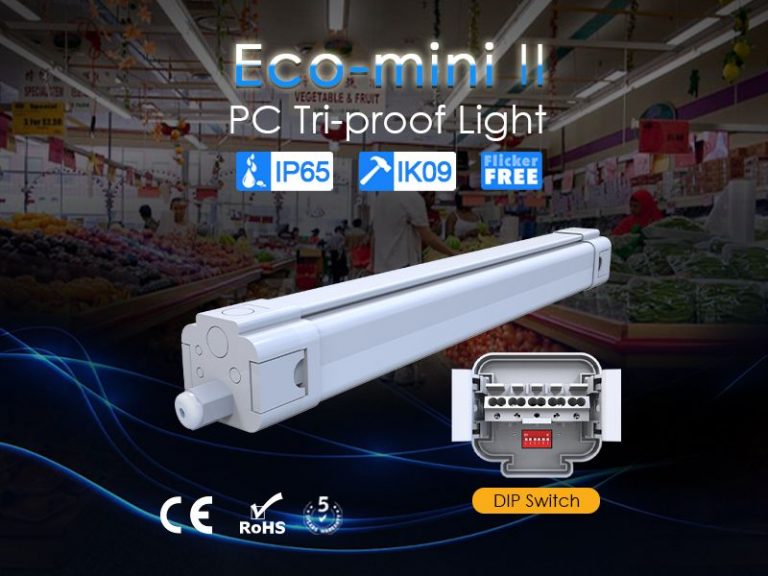
Illustrative Image (Source: Google Search)
The competitive landscape is characterized by a mix of established manufacturers and emerging players. Buyers are advised to consider factors such as product quality, pricing, after-sales support, and supplier reliability when selecting suppliers. Partnerships with suppliers that offer customization options can also provide a competitive edge in meeting specific market demands.
Sustainability and ethical sourcing have become critical focal points for buyers in the B2B sector, particularly for those operating in Europe, where regulatory pressures are high. Many top suppliers of long shape tri-proof LED ceiling lights are adopting eco-friendly practices by utilizing recyclable materials, reducing waste, and ensuring compliance with international environmental standards.
Moreover, suppliers are increasingly transparent about their supply chains, providing certifications that demonstrate adherence to ethical labor practices and environmental sustainability. This commitment not only fulfills regulatory requirements but also appeals to environmentally-conscious consumers and businesses looking to enhance their corporate social responsibility (CSR) profiles.
Buyers should prioritize suppliers that actively demonstrate their sustainability efforts, such as energy-efficient manufacturing processes and the use of non-toxic materials. Engaging with suppliers who are ISO-certified or who participate in recognized sustainability programs can further ensure responsible sourcing practices.
The evolution of the long shape tri-proof LED ceiling light market can be traced back to the early 2000s when LED technology began to gain traction as a viable alternative to traditional lighting solutions. Initially, the focus was primarily on improving energy efficiency and reducing operational costs. As technology advanced, manufacturers began to innovate with designs that catered to specific environments, leading to the creation of tri-proof lights that could withstand harsh conditions.
Over the past decade, the market has matured, with suppliers now emphasizing smart technology integration and sustainability. As global demand for energy-efficient and durable lighting solutions continues to grow, the long shape tri-proof LED ceiling light sector is poised for further advancements, reflecting the changing needs and preferences of consumers and businesses alike.
For B2B buyers, understanding these market dynamics, sourcing trends, and sustainability practices is essential for making informed purchasing decisions that align with their organizational goals and values.
Frequently Asked Questions (FAQs) for B2B Buyers of top Long shape Tri-proof LED cieling light suppliers in china
-
How can I effectively vet suppliers of Long shape Tri-proof LED ceiling lights in China?
When vetting suppliers, start by checking their business licenses and certifications to ensure compliance with local regulations. Evaluate their manufacturing capabilities through site visits or virtual tours. Request references from previous clients and assess their product quality through samples. Additionally, look for suppliers with a solid reputation on platforms like Alibaba or Global Sources, paying attention to reviews and ratings. -
What customization options are typically available for Long shape Tri-proof LED ceiling lights?
Most suppliers offer a variety of customization options, including different wattages, color temperatures, and sizes. You can also request specific features like dimming capabilities, motion sensors, or varying lumen outputs. It’s essential to communicate your requirements clearly and ask for prototypes to ensure the final product meets your specifications before placing a larger order. -
What is the usual Minimum Order Quantity (MOQ) for these products?
MOQs can vary significantly between suppliers, typically ranging from 100 to 1000 units. Some manufacturers may offer lower MOQs for customized products, especially if they are trying to build relationships with new clients. Always inquire about the possibility of lower MOQs if you are testing the market or have limited storage capacity. -
How do I ensure quality assurance (QA) during the manufacturing process?
To ensure quality, establish clear QA criteria with your supplier before production begins. Request regular updates and inspections throughout the manufacturing process, including pre-shipment inspections. You may also consider hiring third-party inspection services to verify quality standards and compliance with your specifications, ensuring that the final products meet your expectations. -
What logistics options should I consider when importing from China?
Logistics can include air freight for faster delivery or sea freight for cost-effective bulk shipping. Work with your supplier to determine the best shipping method based on your timeline and budget. Additionally, consider using freight forwarders who can help manage customs clearance, documentation, and shipping logistics, simplifying the overall process. -
How can I navigate customs regulations when importing LED lights into my country?
Familiarize yourself with your country’s import regulations concerning LED lighting products. This includes understanding tariffs, import duties, and safety standards. Collaborating with your supplier to ensure that all necessary documentation, such as certificates of origin and compliance, is in order will help facilitate a smoother customs clearance process. -
What payment terms are commonly accepted by Chinese suppliers?
Most suppliers prefer payment through methods like T/T (bank transfer), PayPal, or Alibaba Trade Assurance. Payment terms often include a deposit (typically 30%) upfront, with the balance paid before shipment. Always negotiate terms that provide you with a level of security and consider using escrow services for larger transactions to mitigate risk. -
How can I manage potential language barriers when communicating with suppliers?
To overcome language barriers, consider hiring a translator or using translation services for written communication. Many suppliers have English-speaking representatives, so inquire about this option. Additionally, using clear and concise language, along with visual aids like diagrams or images, can help convey your requirements more effectively during discussions.
Important Disclaimer & Terms of Use
⚠️ Important Disclaimer
The information provided in this guide is for informational and educational purposes only. It does not constitute professional procurement, financial, or legal advice.
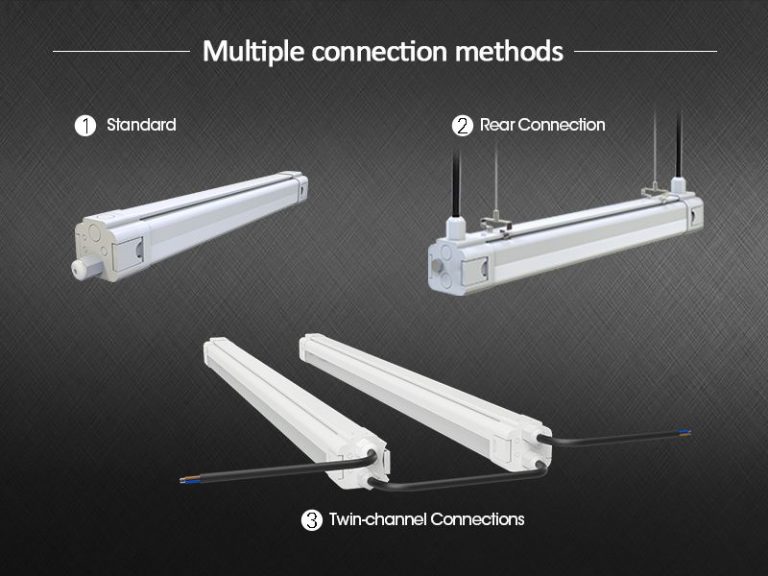
Illustrative Image (Source: Google Search)
While we have made every effort to ensure accuracy, we are not responsible for any errors or omissions. Market conditions and company details are subject to change.
B2B buyers must conduct their own independent and thorough due diligence before making any purchasing decisions.
Strategic Sourcing Conclusion and Outlook for top Long shape Tri-proof LED cieling light suppliers in china
As international B2B buyers navigate the competitive landscape of the Long shape Tri-proof LED ceiling light market, strategic sourcing emerges as a critical component for success. Engaging with reputable suppliers in China not only ensures access to high-quality products but also helps in optimizing costs and enhancing supply chain efficiency.
Key takeaways include the importance of evaluating supplier capabilities, understanding local regulations, and leveraging technological advancements for better product specifications and compliance. Buyers should prioritize partnerships with manufacturers who demonstrate a commitment to sustainability and innovation, as these factors increasingly influence market dynamics.
Looking forward, the demand for energy-efficient and durable lighting solutions is set to rise, particularly in emerging markets across Africa, South America, the Middle East, and Europe. This presents an opportune moment for buyers to reassess their sourcing strategies and align them with global trends. By doing so, companies can not only secure a competitive edge but also contribute to a more sustainable future.
Take the next step in your sourcing strategy by conducting thorough market research, fostering relationships with key suppliers, and staying ahead of industry trends to maximize your investment in LED lighting solutions.

